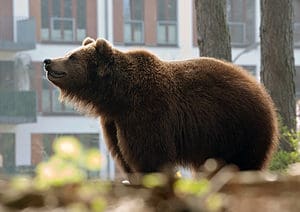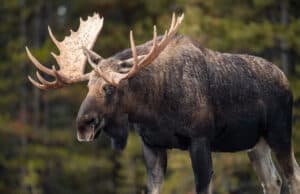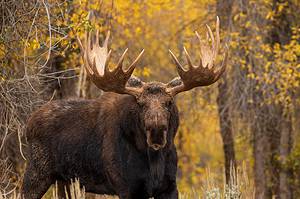This incredible video has divided the internet! Is it real or is it fake? It appears to show a huge moose running alongside a boat – apparently walking on water. Can this really be true?
Click The Link Below to See The Magical Moose
Moose Walking on Water Video
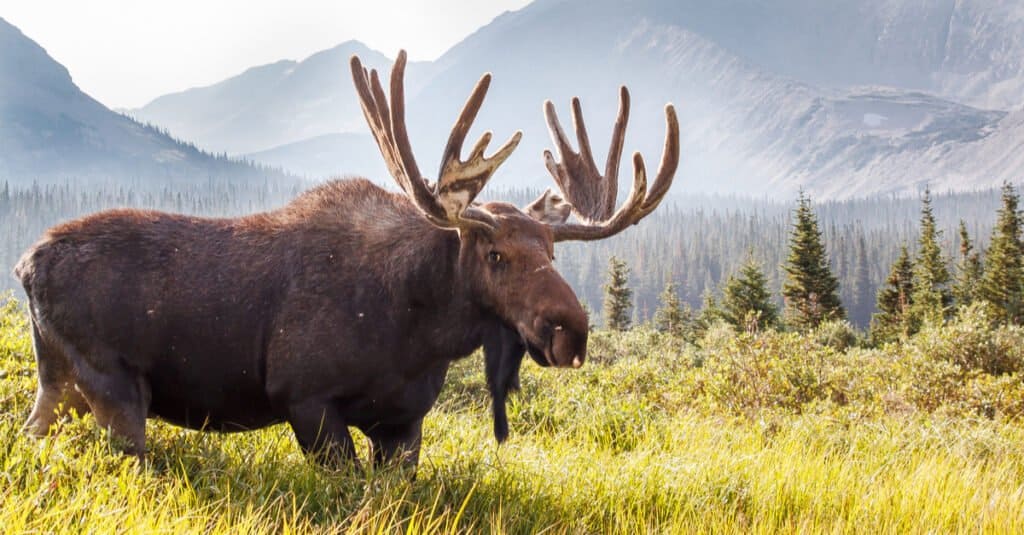
Moose are not an animal species that can walk on water.
©Michael Liggett/Shutterstock.com
This particular video has been circulating since 2020, but there are a few other clips out there that seem to show moose walking on water. So, can moose actually walk on water? The simple answer is, no, they cannot. Moose are the largest of all the deer species and are found in several locations in North America as well as in parts of Europe and Eurasia. Some can grow to over 1,500 pounds! Whilst more than 1,200 animal species have the ability to walk on water, moose are not one of them.
Animals that can walk on water are often very small, such as the water strider (pond skater), and their weight can be fully supported by the surface tension of the water. Others, such as the Western Grebe and the basilisk lizard, slap downwards on the water with such force that it stops them from sinking.
Moose are strong swimmers and can swim for over 10 miles – they can even stay underwater for 30 seconds, but they can’t walk on it!
Shallow Water and Small Boats?

It is hard to believe that an animal this large lives entirely on plants.
©ArtBBNV/Shutterstock.com
A number of explanations have been put forward for what is happening in this video. Most commentators are convinced that the water is very shallow. Because the moose is so tall, it is difficult to appreciate that they are actually striding through water that is several inches deep. Others think that the moose knows where a hidden mound is located and that it is following that to avoid deeper water. But that does not really explain the boat that is traveling alongside the moose and how the animal can cross in front of the boat.
One explanation is that this is a very shallow jet boat (or airboat) that can be used in just a few inches of water.
Traditional boats with outboard motors and propellers would soon get damaged in shallow water as the propellor hit the ground. But in jet propulsion systems, the water is sucked up from underneath the boat and pushed out at high pressure from the back. These flat-bottomed boats are ideal for shallow rivers and sheltered lakes and for following moose!
Do Moose Normally Get in the Water?
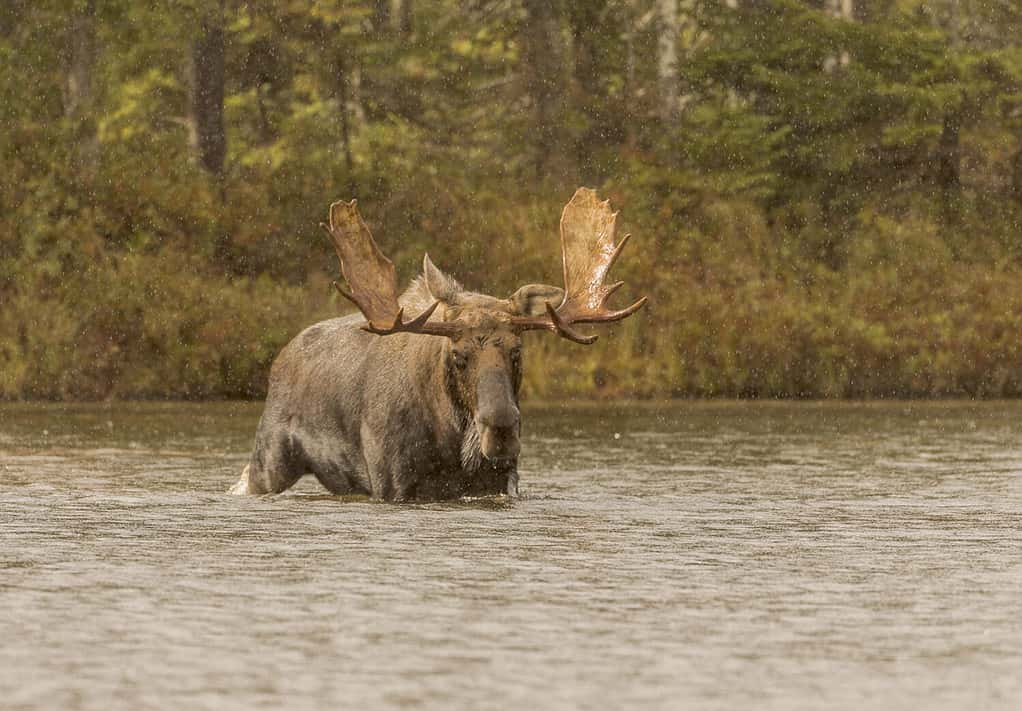
Because they eat aquatic plants, it is quite normal to see moose in the water.
©Richard Seeley/Shutterstock.com
Moose are large animals that live in cold climates, such as the northern parts of North America, Poland, and Russia. They are usually found in forested areas, near lakes and rivers.
The normal behavior of moose is to live a solitary life, except during mating season, when bulls may gather in groups. They are herbivores and mostly feed on leaves, twigs, and bark. They are usually very shy when it comes to humans but can become aggressive if they feel threatened.
Moose are excellent swimmers and can spend hours in the water. It is not unusual for them to get into the water, either to escape predators or to cool down in hot weather. Moose also use the water to help them find food, as they are able to forage for aquatic plants.
In addition to swimming, moose can also run very fast, reaching speeds of up to 35 miles per hour. They are also very good at jumping and can leap over obstacles that are up to 6 feet tall.
Overall, moose are peaceful, shy animals that prefer to be left alone. They can be dangerous when provoked, but for the most part, they are content to live their lives in their natural habitat.
How Big Are Moose?
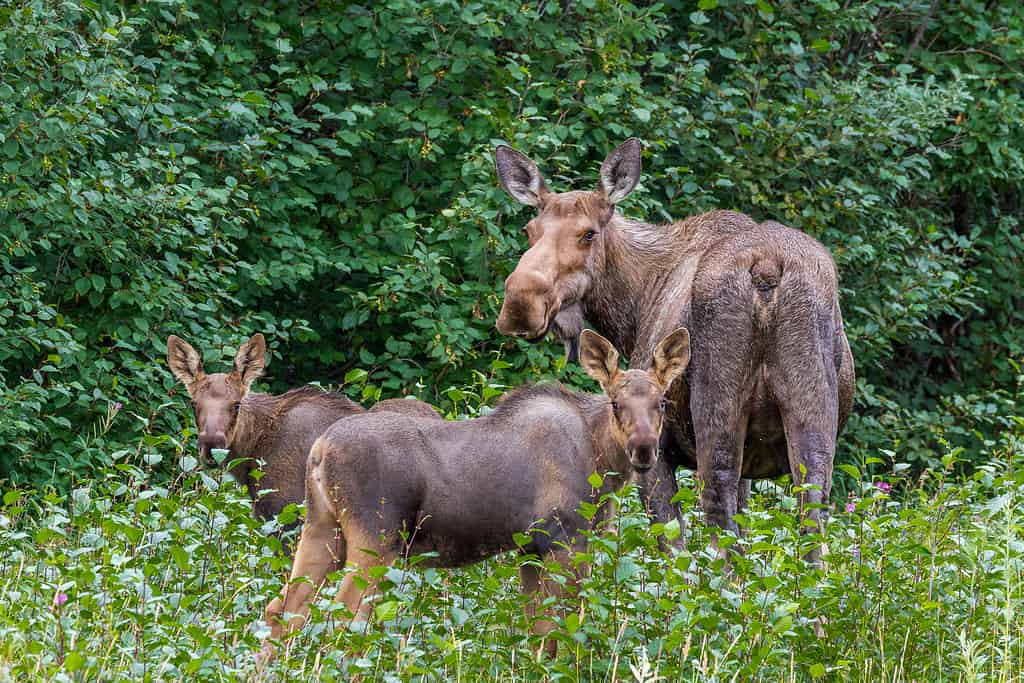
The moose in Alaska are particularly large.
©JacobLoyacano/Shutterstock.com
Moose are impressively large animals, particularly when fully grown. Newborn moose calves weigh between 20 and 30 pounds, while fully grown females typically weigh between 500 and 1,000 pounds. Fully grown males, on the other hand, can weigh up to 1,500 pounds.
An adult moose is between 4.5 and 7 feet tall at the shoulder! If you measure a moose from forehead to rump, they are between 8-10 feet long.
The size of moose is largely determined by their diet. Moose feed on a variety of plants, such as aquatic vegetation, twigs, and leaves, and can consume up to 40 pounds of vegetation each day. This diet, combined with their impressive size, helps them to regulate their body temperature and thrive during the cold winter months.
Moose also have a unique body structure that allows them to carry their large size. Their legs are incredibly long and sturdy, while their neck and head are disproportionately large in comparison to their body. This allows them to reach and consume vegetation that would otherwise be out of reach for other animals.
Overall, moose are an incredibly impressive animal, both in size and in their ability to survive and thrive in their natural habitat. Newborn calves may be small, but they quickly grow to become large and powerful animals, thanks largely to their unique dietary and body structure needs.
The photo featured at the top of this post is © Mark Byer/Shutterstock.com
Thank you for reading! Have some feedback for us? Contact the AZ Animals editorial team.



